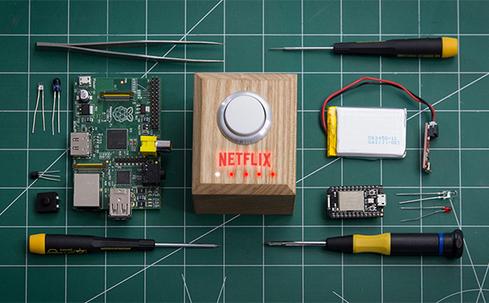Netflix's slightly tongue-in-cheek invention shows that the Internet of Things is way too complicated for consumers.


8 Smart Cities: A Peek At Our Connected Future
8 Smart Cities: A Peek At Our Connected Future (Click image for larger view and slideshow.)
You've heard of the Staples Easy Button? Netflix has invented the lazy button. The Netflix Switch is a button that will dim your lights, turn on your TV, and automatically start your Netflix queue for you. Netflix calls it "the switch," but the Internet seems to have settled on "Netflix and Chill" Button.
It tells us a lot about the current state of the Internet of Things (IoT).
Netflix is not selling the button. It's giving you directions on how to make your own. Think of it as half Amazon Button and half viral-marketing ploy. You get to build something and tinker with electronics, which should be relatively easy for an IT professional. And then you get to connect it to an IoT environment, including whatever smart hub you have controlling your lights.
Really, by the time you're done making this thing, you deserve to binge-watch a little Orange is the New Black. Check out the video:
One of the obvious missed opportunities in the video is it suggests you order food with your phone before pushing the button. Bah! There's no reason you can't rig the button to order the food, too. We've seen pizza and coffee ordering buttons. And recently, Dominos pizza has made it possible for you to order pizza by sending an emoji. I'm pretty sure we can rig this thing to send an emoji. Netflix suggests this as an option in its instructions, but I'm saying this is a must.
Netflix and Chill simultaneously taps into what is awesome and what is silly about IoT from a consumer perspective. It is clearly poking a little fun at the Amazon Dash button that can be used for ordering detergent or toilet paper or any number of individual household supplies. On the other hand, it is also making fun of the complexity of most smart hubs these days. Setting "moods" for lighting is one thing. Smart hubs all do that. And setting enough rules to create a "Netflix and Chill" button is probably possible with some hubs if you're an expert. But Netflix is basically saying that, right now, it is easier to make your own button (using its deliberately funny and slightly vague zillion-step process) than to try to work with existing IoT tools.
In other words, the company is capitalizing nicely on the idea that we want technology to interact with us like we're people and not machines. Netflix positions itself as human-based technology company (your mileage may vary). Its analytics are aimed at our habits as watchers. IoT technology, on the other hand, tends to emphasize the data over the human. Netflix, not being born from the IoT, doesn't think that way."
Whether this sells more Netflix subscriptions or gets people to make their own buttons or not (and it probably won't), it provides some thoughtful lessons in the way IoT needs to be humanized. It needs to be interconnected, and it needs to work the way we live.
[ What else is standing in the way of IoT? Read Internet of Things: What's Holding Us Back. ]
We don't come home from work and only order a pizza or only dim the lights or only watch a movie. We come home and live a life. We need to integrate IoT into one seamless experience, rather than having buttons all over the house that control different things. It's the lack of integration (despite some efforts) that is probably holding back the IoT from a consumer perspective. What Netflix is basically saying is that the IoT's user experience is bad. And it is hard to argue that point.
What do you think? Will you make a Netflix button? Does it give you the idea for other buttons? Do you think a lack of lifestyle integration is what is holding back the IoT? Tell me in the comments section below.
About the Author(s)
You May Also Like







